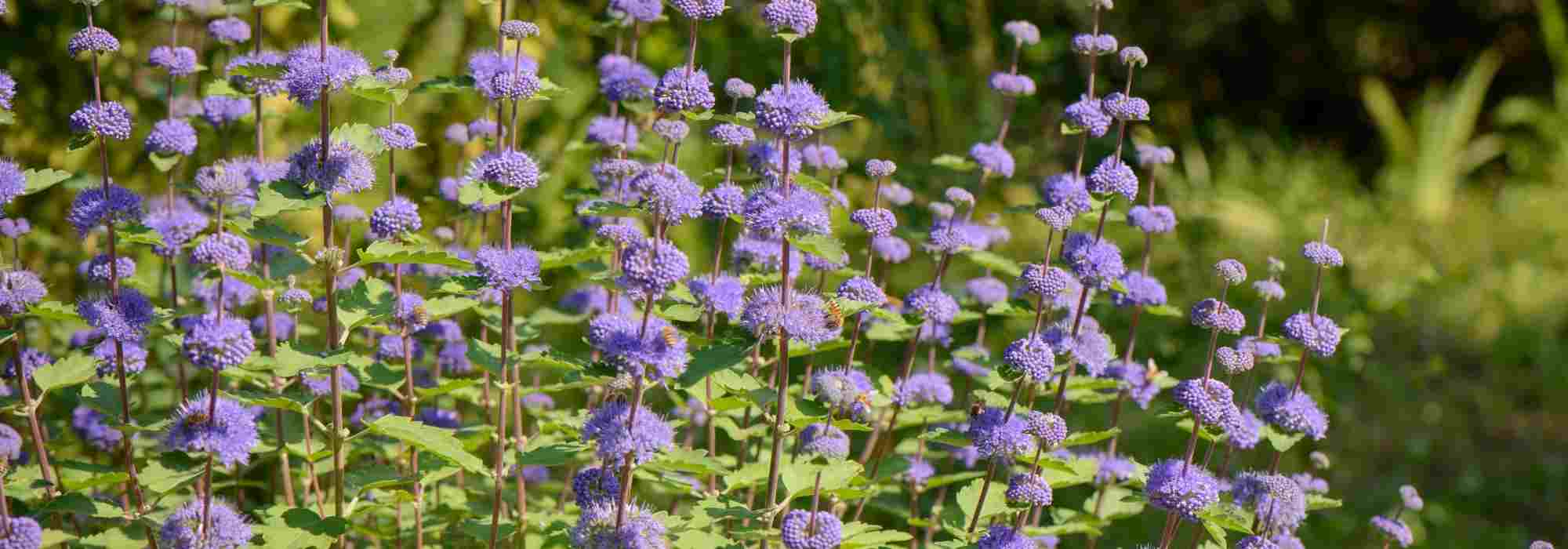
Caryopteris: the most beautiful varieties
7 stunning blue spireas
Contents
Caryopteris, also known as blue spiraea or bluebeard, is a lovely little bush that is very decorative thanks to its flowering which lasts from August to October. At this time, a multitude of clusters of small blue or pink flowers appear at the tips of its branches. The blue spiraea is also notable for its beautiful deciduous foliage, aromatic when crushed, in grey-green tones or variegated with golden yellow. This bush can be used in perennial borders, rockeries, in pots, or as a small hedge. The blue beard is hardy and easy to grow in sunny regions where the soil is well-drained, even dry. Discover our selection of the most beautiful varieties of caryopteris to adopt in the garden.
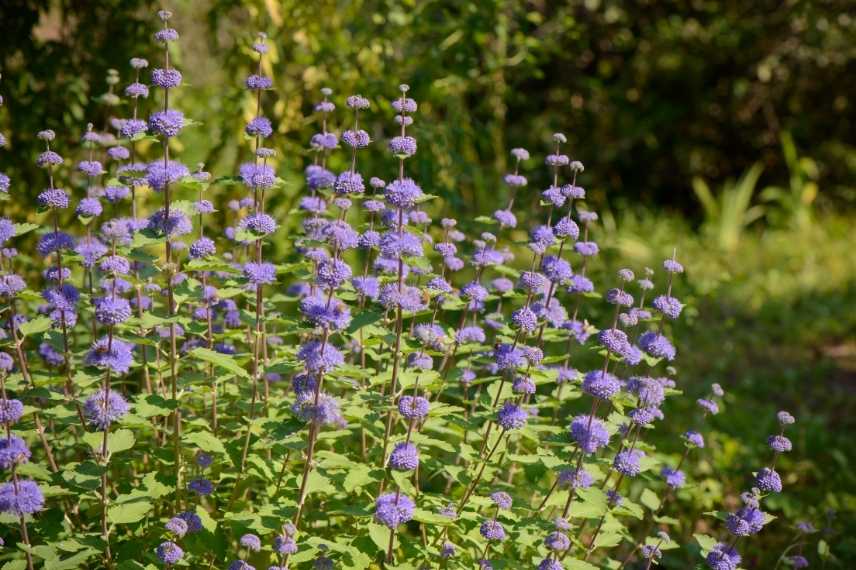
Caryopteris 'Grand Bleu'
The Caryopteris clandonensis ‘Grand Bleu’ forms a beautiful rounded and bushy plant, 1 m high and 1.5 m wide. Its deciduous foliage is grey-silver green and delicately aromatic when crushed. From August to October, this shrub offers clusters of small, deep blue flowers with long stamens. Hardy and low-maintenance, this bush adapts to any well-drained soil, even calcareous. Caryopteris ‘Grand Bleu’ enjoys warmth and tolerates full sun as well as drought perfectly. It will look wonderful as a standalone, in a low hedge, in a pot, or in a shrub border. To accompany it, you can plant a Mock Orange, Sedums, an Aster, Rudbeckias, and a bush rose.
Read also
7 ideas for pairing CaryoptérisCaryopteris clandonensis 'Stephi'
The Caryopteris clandonensis ‘Stephi’ is one of the best varieties of pink flowering spiraea. Rather early, this bush blooms from late July until October, offering us delicate pale lilac pink bouquets with a subtle fragrance. Its deciduous silver-green foliage also releases a subtle scent when crushed. At maturity, it forms a bushy, slightly spreading shape of 75 cm in all directions. Relatively hardy, this caryopteris is easy to grow in full sun, in well-drained, light, stony, sandy, and even calcareous soil. It will naturally find its place in a pot, a border, or a low hedge alongside Perovskia, nepeta, lavender, bushy sage, Aster, and a bush rose.
Discover other Caryopteris
View all →Available in 2 sizes
Available in 0 sizes
Available in 1 sizes
Available in 1 sizes
Available in 1 sizes
Available in 1 sizes
Available in 3 sizes
Available in 1 sizes
Available in 3 sizes
Available in 1 sizes
Caryopteris divaricata 'Electrum'
The Caryopteris divaricata ‘Electrum’ stands out with its superb deciduous foliage in almond green variegated with cream white, bringing brightness to the garden. Uniquely, it forms a compact, bushy clump, measuring 80 cm in height and 60 cm in spread. From August to October, it is covered in beautiful small lavender flowers with a white throat and speckled blue. Very hardy and heat-resistant, it enjoys a position in full sun or light partial shade, in all types of soil, including heavy or cool earth. This delicate shrub is perfect for pots, as a standalone, or in a low hedge alongside Marsh Mallow, Trachystemon orientalis, Epilobium, or Aster turbinellus.
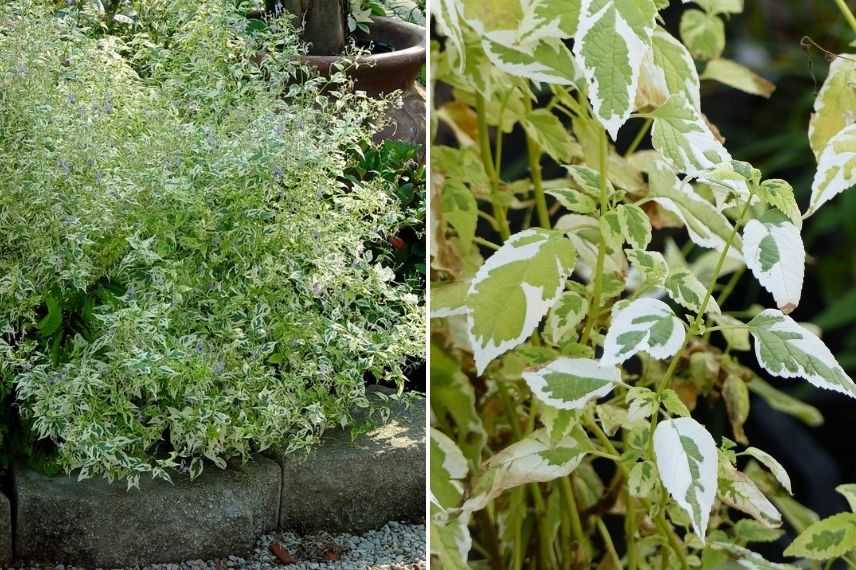
Caryopteris ‘Electrum’
Read also
10 evergreen bushes for dry soilCaryopteris clandonensis 'Heavenly Blue'
The Caryopteris clandonensis ‘Heavenly Blue’ will bring cheer to the garden with its late flowering that begins in August and lasts until October. Its small flowers, of an intense violet-blue, form beautiful dense and airy bouquets. Its deciduous leaves are fragrant when crushed. Its decorative foliage is dark green on top while the underside is silver. This undershrub forms an upright and ramified bush that is perfect for a small hedge, in a rockery, or a flowerbed. It enjoys a sunny location in light, well-drained, stony, and even sandy soil. It pairs easily with a shrubby cinquefoil, a dwarf Buddleia ‘White Chip’, a shrubby sage, anthemis, and stipas.
Caryopteris 'Hint of Gold'
The Caryopteris ‘Hint of Gold’ is a very decorative blue beard from early spring, thanks to its magnificent golden-yellow foliage, turning acid green in summer. Its leaves, bright and aromatic when crushed, will bring cheer to the garden before disappearing during winter. Then, from August to October, it offers bouquets of lavender-blue flowers. This spiraea is relatively hardy. It enjoys a sunny location in well-drained, light, gravelly, or even sandy soil. It forms a bushy shrub, measuring 80 cm to 1 m in all directions, which is perfect for pot cultivation, in a shrub border, or in a low hedge. You can pair it with shrubby potentillas, a ceratostigma, a large nepeta, a Buddleia ‘Miss Ruby’, Helianthus, or a bushy sage.
Caryopteris clandonensis 'Sterling Silver'
The Caryopteris clandonensis ‘Sterling Silver’ has a deciduous, highly decorative and fragrant foliage, in grey-blue tones with silver highlights, a rather rare colour for blue spireas. This bright bush forms a dense shrub measuring 1 m to 1.20 m in height and 90 cm wide. It produces charming bouquets of small intense blue flowers, which appear from August to October. It thrives in full sun, in well-drained, deep, stony or sandy soil. This shrub is ideal for rockeries, in shrub borders, or in a low hedge, alongside an Aster turbinellus, a ceratostigma, a lavender, dwarf blue conifers, a dwarf buddleia ‘Free Petite Lavender Flow’, or a bushy sage.
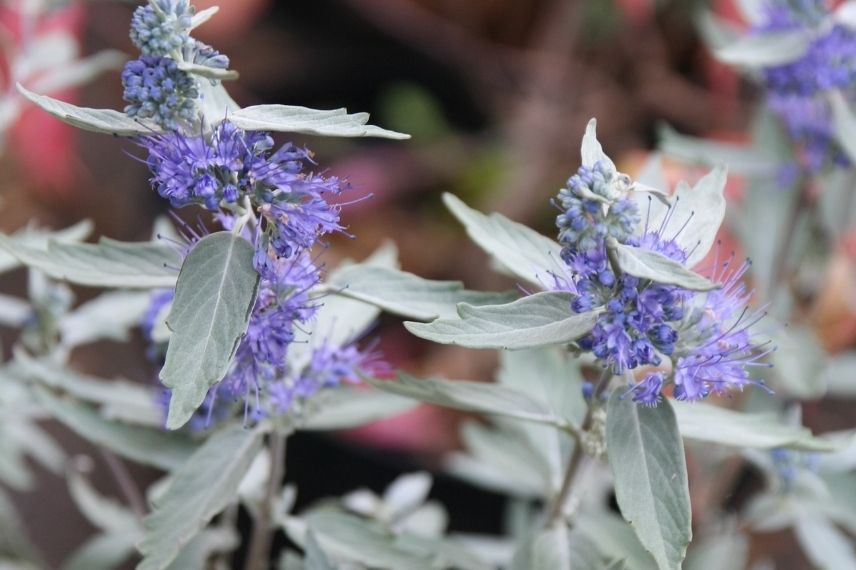
Caryopteris ‘Sterling Silver’
Caryopteris 'Summer Sorbet'
The Caryopteris ‘Summer Sorbet’ stands out with its bright grey-green foliage, marginate with yellow, like a ray of sunshine in the garden. This variety of Blue Beard forms a bush 80 cm tall and 1.20 m wide. From August to October, it produces lovely little sky-blue flowers that will delight both butterflies and gardeners. This spiraea prefers a sunny location in rich, deep, well-drained, neutral to calcareous soil. It looks stunning in pots, in shrub borders, or with other perennials such as repeat flowering roses, potentillas, a bushy sage, a marsh mallow, and a ceratostigma.
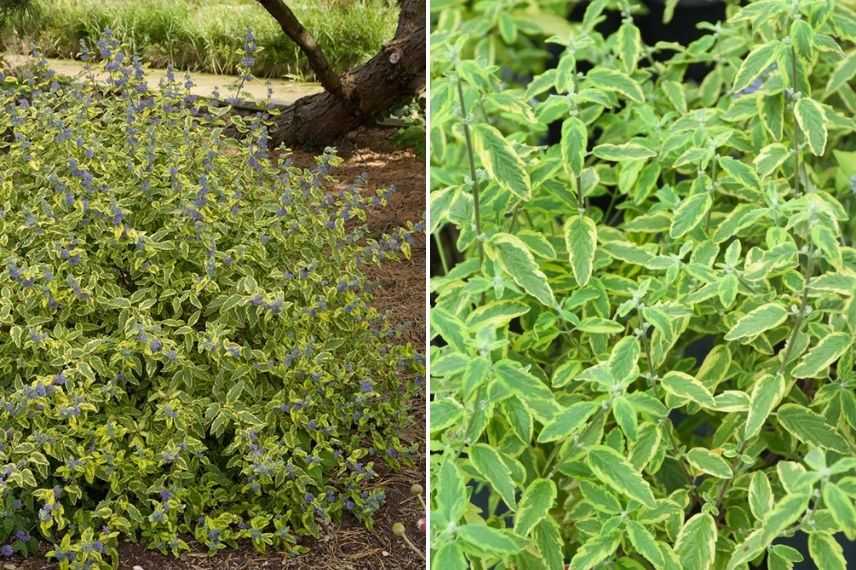
Caryopteris ‘Summer Sorbet’
For further reading
- Discover all our varieties of caryopteris.
- To learn everything about caryopteris, find our tips on Blue Spirea: planting, pruning and care.
- Subscribe!
- Contents
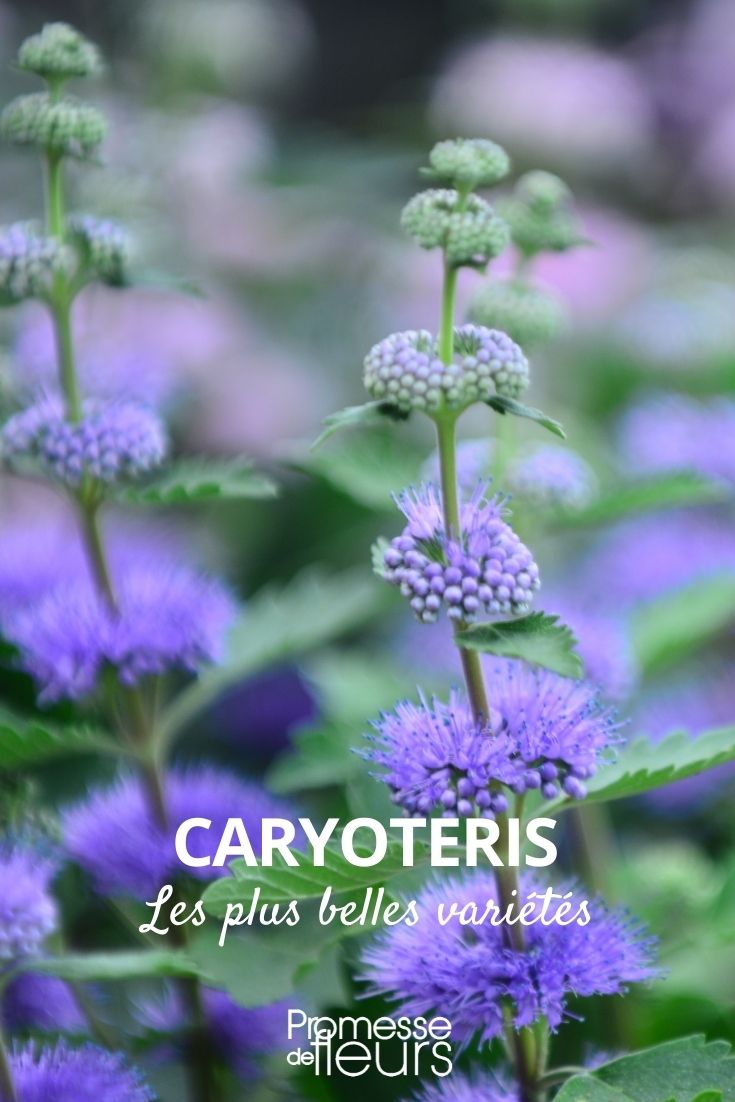































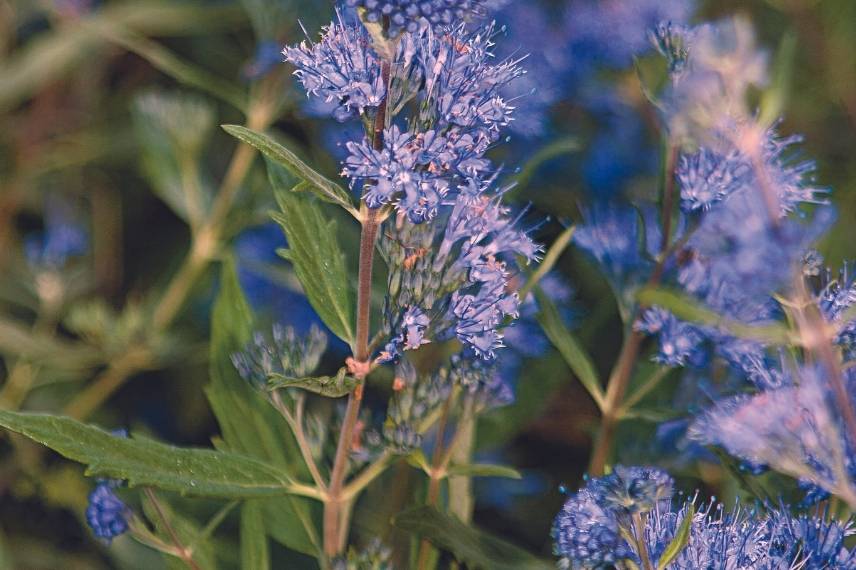
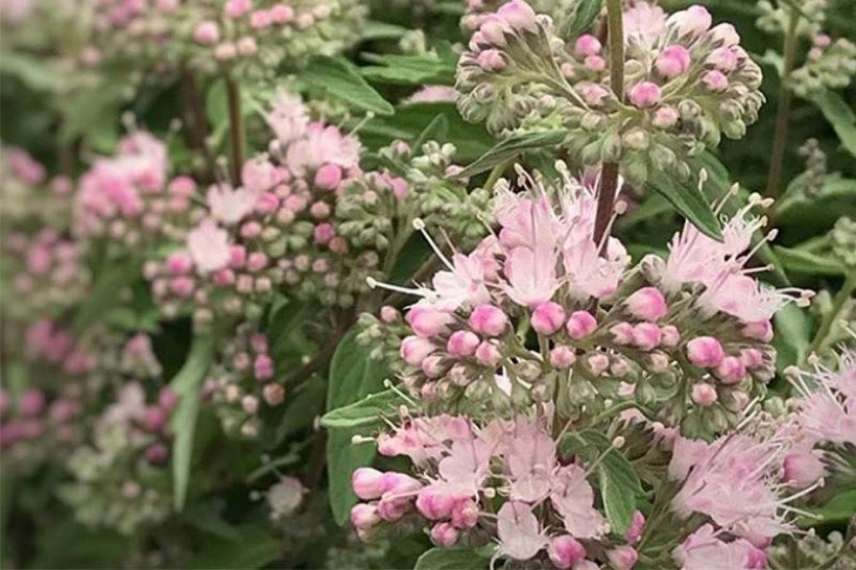
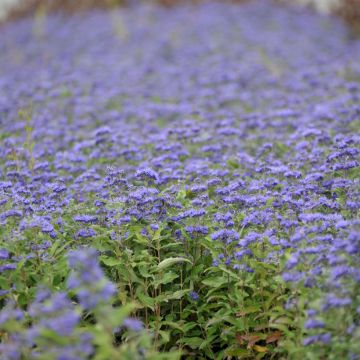
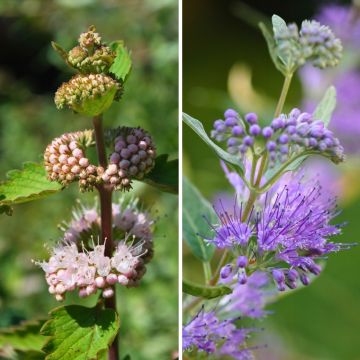
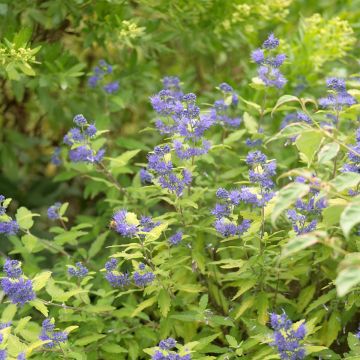
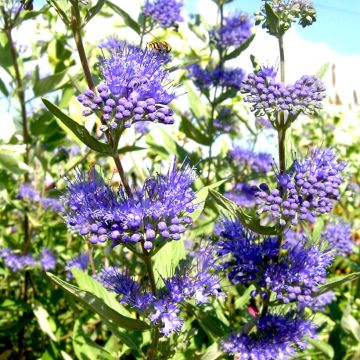
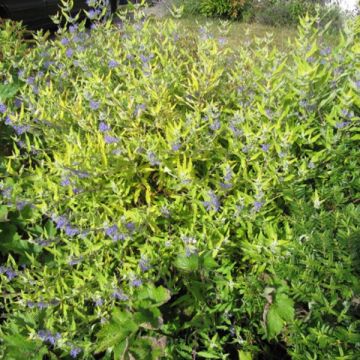
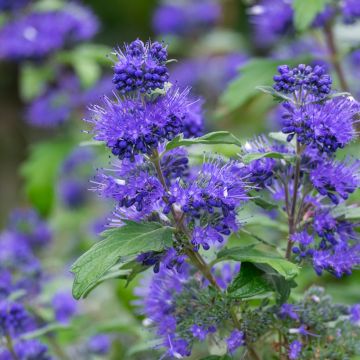
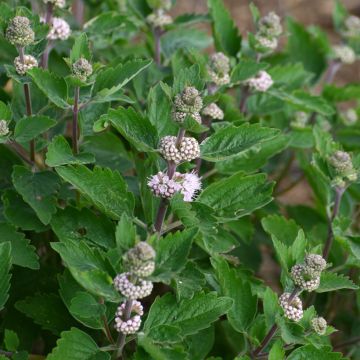
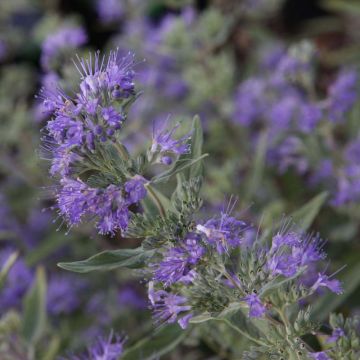
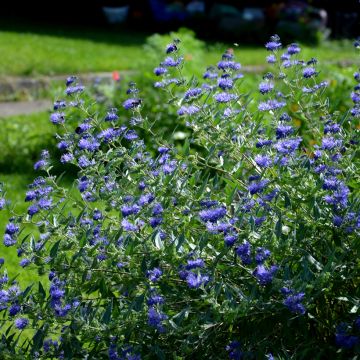
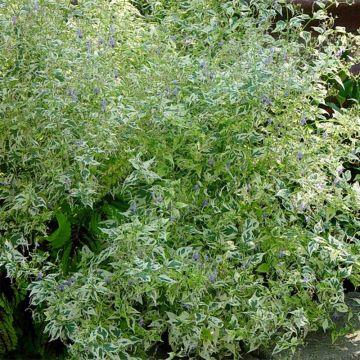
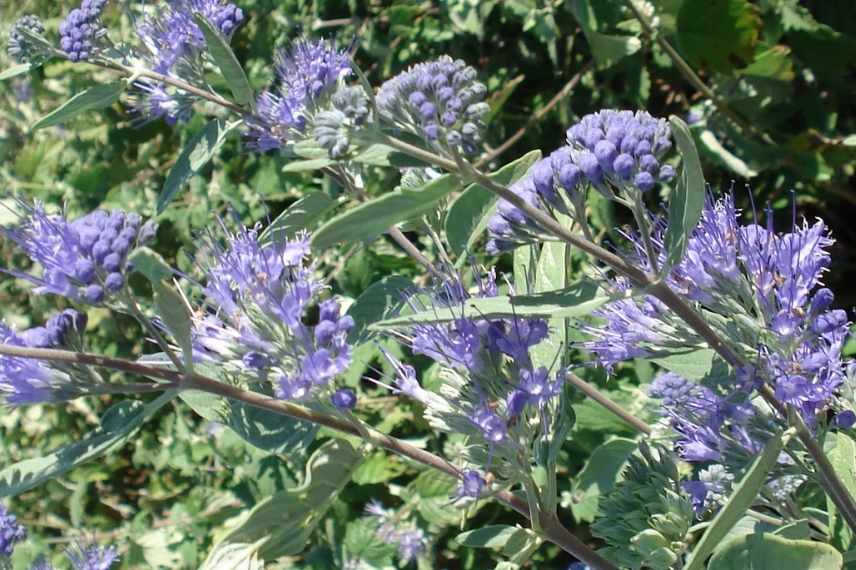
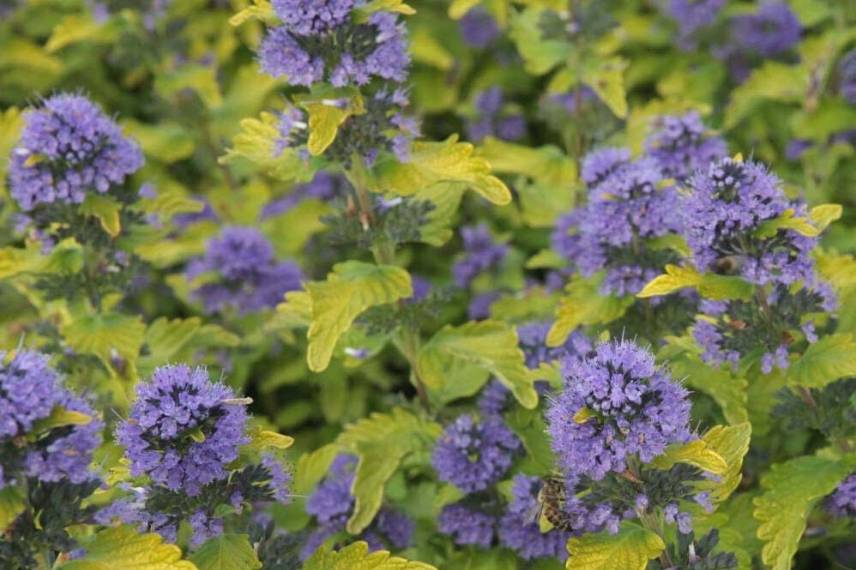
Comments